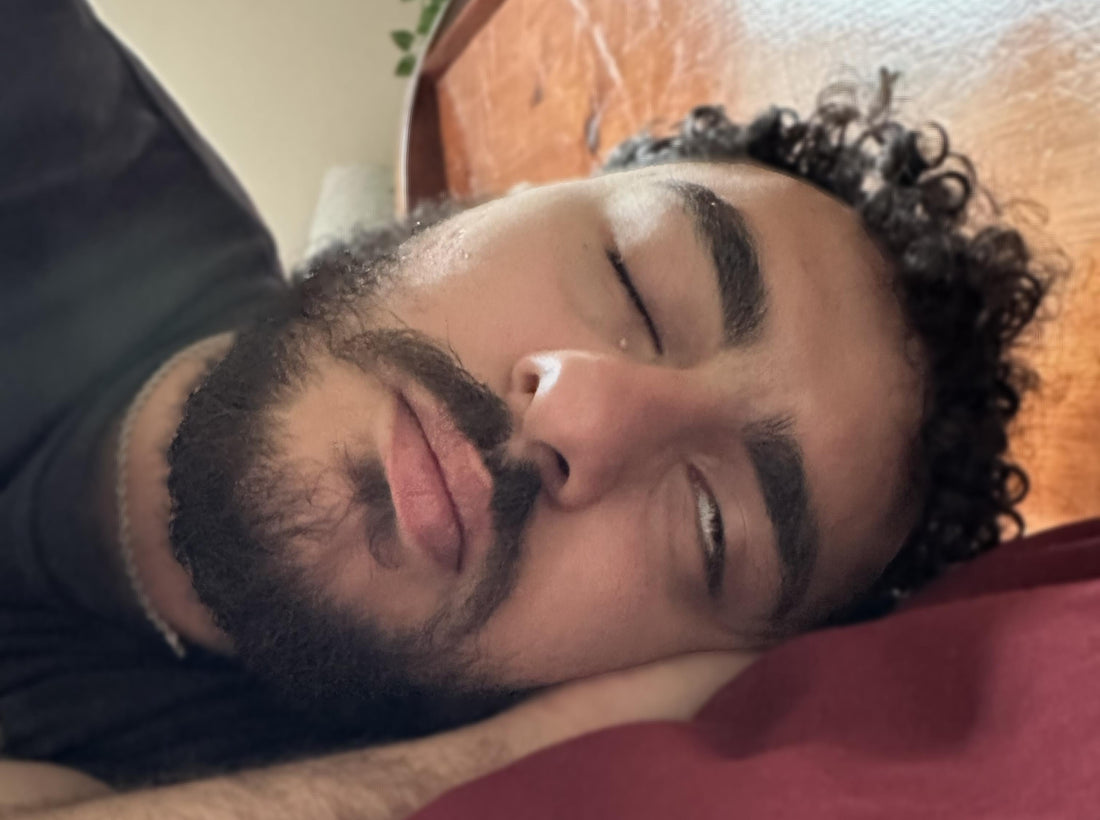Top Causes of Nighttime Dry Eyes (And How to Prevent Them)
Waking up with dry, irritated eyes? Learn the top causes of nighttime dry eye and how simple solutions like EyeOasis Sleeping Tape can help you wake up feeling refreshed.

Top Causes of Nighttime Dry Eyes (And How to Prevent Them)
Waking up with dry, irritated eyes is more common than you might think. Nighttime dryness can make mornings uncomfortable and even affect your vision over time. Understanding what causes it — and how to prevent it — can make a big difference in both comfort and eye health.
Quick Navigation
1. Incomplete Eyelid Closure (Nocturnal Lagophthalmos)
For many people, eyelids don’t fully close during sleep — a condition called nocturnal lagophthalmos. Even a small gap allows the thin tear film on your eyes to evaporate overnight, leaving the cornea exposed and dry.
You might notice your eyes feel sandy, sore, or unusually red when you wake up. Sometimes, partners even report seeing your eyes slightly open while you sleep.
Solution: EyeOasis Sleeping Tape gently seals the eyelids, preventing moisture loss while remaining comfortable enough for nightly use. Unlike medical tape, it’s made from skin-friendly silicone that removes without irritation.
2. Dry Bedroom Environment
The air in your bedroom can have a big impact on eye moisture. Air conditioning, space heaters, and ceiling fans all reduce humidity and accelerate tear evaporation. Even if your eyes close fully, these conditions can still cause dryness.
Solution: Use a humidifier to maintain optimal moisture levels, and redirect fans or vents so they don’t blow toward your face. Keeping the ambient humidity around 40–50% can significantly reduce morning irritation.
3. Sleep Position
Your sleeping position might be causing your dryness without you realizing it. Sleeping on your side or stomach can press the eyelid against your pillow, causing it to partially open. This subtle exposure lets air dry your cornea overnight.
Solution: Sleeping tape keeps eyelids fully closed, regardless of your position. For extra protection, try silk pillowcases or moisture chamber goggles if you tend to sleep face-down.
4. Age and Eyelid Changes
As we age, the muscles around the eyelids can weaken, and skin elasticity decreases. This combination makes it harder for the lids to stay completely sealed during sleep. Even small changes in tone can lead to nighttime exposure.
Solution: EyeOasis Tape compensates for this natural aging effect by gently closing the lids without discomfort. It’s a simple, non-invasive way to prevent the dryness that often comes with age.
5. Medical Conditions or Surgeries
Facial nerve weakness (such as from Bell’s palsy), thyroid eye disease, or eyelid surgery can interfere with your ability to fully close your eyes. Post-surgical swelling or scarring can also cause temporary lagophthalmos, increasing dryness risk.
Solution: If your eyes can’t close naturally, use protective measures at night — like taping the eyes shut with a silicone-based tape designed for eyelids. This prevents exposure and helps maintain a healthy tear film. Always consult your eye doctor before resuming taping post-surgery.
Extra Prevention Tips
- Use preservative-free artificial tears before bed.
- Keep your bedroom humidity between 40–50%.
- Avoid alcohol or caffeine close to bedtime (both dehydrate the body).
- Establish a gentle bedtime routine for your eyes — clean lids, lubricate, seal.
- Stay hydrated throughout the day to maintain healthy tear production.
When to See an Eye Doctor
If your eyes remain red, gritty, or painful even after trying preventive steps, it’s time to see a professional. You may be dealing with an underlying cause such as meibomian gland dysfunction or chronic exposure keratopathy. Your doctor can recommend prescription drops, punctal plugs, or targeted therapies for more advanced dryness.
Shop the Solution
Sleep comfortably and wake up refreshed with EyeOasis Sleeping Tape — dermatologist-tested, ISO-certified, and designed to protect against dryness from incomplete eyelid closure, CPAP air leaks, or post-surgery recovery.
Sources
- American Academy of Ophthalmology. Exposure Keratopathy: Diagnosis and Management.
- Craig JP, et al. TFOS DEWS II: Definition and Classification of Dry Eye Disease. Ocul Surf. 2017.
- Nau A. Better manage nocturnal lagophthalmos for dry eye patients. Optometry Times.
- Wolkoff P. Indoor Air Humidity and Dry Eye Symptoms. Indoor Air. 2018.
- Harrison W, et al. Nocturnal Lagophthalmos and Sleep Quality in Dry Eye Disease. Cornea. 2018.
